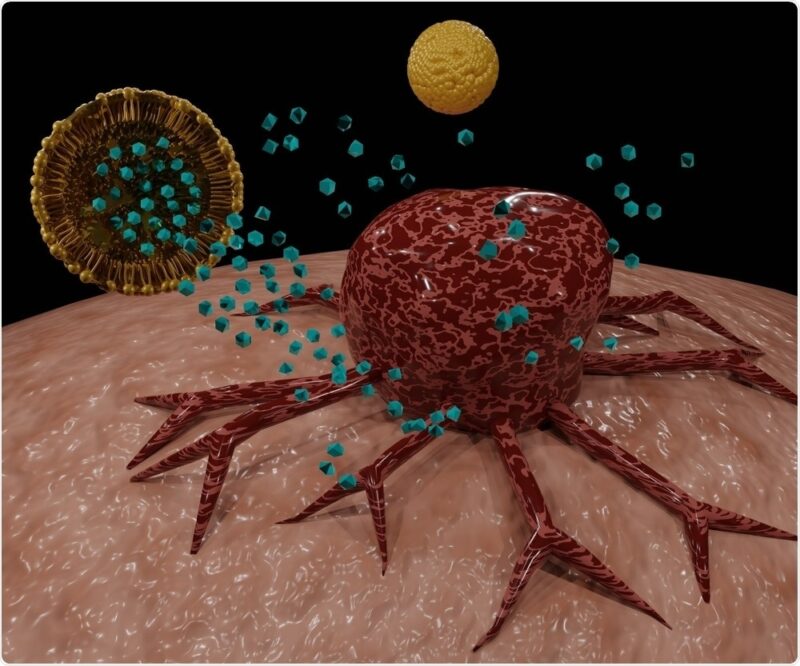The delivery of fragile molecules, such as RNA, DNA, and certain proteins, has always been one of the toughest barriers in modern medicine.
These compounds are powerful but delicate, easily broken down by enzymes or rendered inactive before they can reach their targets.
Lipid nanoparticles (LNPs) have emerged as one of the most effective carriers for these sensitive payloads, offering protection, precision, and efficiency that older delivery systems struggled to achieve.
Key Points:
- Lipid nanoparticles protect fragile molecules from degradation.
- They enhance absorption and cellular uptake.
- LNPs allow controlled release and improved targeting.
- Manufacturing processes are scalable for research and commercial use.
- Clinical successes, especially in mRNA vaccines, validate their effectiveness.
Why Fragile Molecules Need Extra Care

Therapeutic molecules like RNA or proteins are not just sensitive; they are extremely vulnerable in the body’s harsh environment.
The bloodstream is filled with enzymes designed to break down foreign molecules. Without protection, therapeutic RNA can degrade in minutes, leaving little to reach cells.
Beyond degradation, fragile molecules often lack the ability to cross cell membranes on their own. This is where the concept of a delivery vehicle becomes essential.
A good carrier must protect the molecule, guide it to the right tissue, and help it cross into cells without losing activity. Lipid nanoparticles excel in all three roles.
How Lipid Nanoparticles Work in Practice
LNPs are tiny, sphere-like structures made from lipids that can enclose fragile molecules in their core.
Think of them as microscopic bubbles that shelter the therapeutic cargo from external threats.
The design is not random: different types of lipids are carefully chosen to balance stability, charge, and release properties.
What makes them so effective is their ability to mimic the body’s own mechanisms.
Since cell membranes are also lipid-based, LNPs can fuse or interact naturally with cells, releasing their contents directly where needed.
This approach minimizes waste and maximizes therapeutic impact.
For readers interested in practical applications and technological innovation, companies leading in drug delivery solutions often highlight this potential.
A deeper look into current solutions shows how firms specialize in developing safe and effective nanoparticle formulations to bring fragile molecules into clinical reality, as explained by https://www.syvento.com.
Proven Success in Vaccines and Beyond
The most widely recognized use of LNPs came during the COVID-19 pandemic, when mRNA vaccines relied on them to deliver genetic instructions safely into human cells. Without LNPs, those vaccines simply would not have been possible.
However, vaccines are just the beginning. LNPs are now being explored in a range of areas:
- Skin Cancer therapies: delivering RNA to reprogram immune cells to attack tumors.
- Genetic disorders: enabling gene-editing tools like CRISPR to reach specific tissues.
- Rare diseases: carrying therapeutic proteins that the body cannot naturally produce.
Each success story builds credibility for LNPs as a long-term solution in precision medicine, not just a pandemic-era breakthrough.
Advantages of Lipid Nanoparticles for Fragile Molecule Delivery

The value of LNPs becomes clear when you compare them to older delivery methods like viral vectors or simple chemical carriers.
Protection Against Enzymatic Breakdown
Fragile molecules can be destroyed within seconds if exposed directly to the bloodstream. Encapsulation inside lipid shells protects them from enzymatic attack until they reach their destination.
Improved Cellular Uptake
Because lipids are part of natural membranes, LNPs integrate smoothly with cell surfaces, increasing the likelihood that cargo gets delivered directly into the cytoplasm. This avoids the problem of molecules being stuck outside or trapped in cellular compartments.
Controlled Release
By adjusting lipid composition, researchers can tune how fast or slow the molecules are released. This flexibility allows for tailored therapies depending on whether immediate or sustained delivery is needed.
Scalability and Manufacturing
Unlike viral vectors that face bottlenecks in production, LNPs can be produced in scalable systems that meet pharmaceutical demand. This has been a crucial advantage in global vaccine distribution and will continue to be a strength in broader drug development.
The Challenges That Remain
While lipid nanoparticles have clear strengths, they are not flawless. Researchers still face important challenges such as:
- Targeting specificity: ensuring nanoparticles reach only the intended tissues.
- Stability issues: preventing aggregation or degradation during storage.
- Safety considerations: reducing potential inflammatory responses in some patients.
These issues are being addressed with improved lipid chemistries and better formulation methods. The progress is fast, driven by the strong demand for advanced therapies.
Future Directions and Potential

The field of LNP technology is rapidly evolving, with exciting possibilities ahead:
- Tissue-Specific Delivery: Scientists are engineering nanoparticles that can recognize receptors on certain tissues, like the liver or lungs, for more precise therapy.
- Gene-Editing Integration: Combining LNPs with CRISPR-Cas systems could revolutionize treatment of inherited diseases.
- Oral Formulations: While most current LNP therapies are injected, future breakthroughs may allow for oral dosing, further simplifying treatments.
These directions point toward a future where fragile molecules are no longer limited by instability. Instead, they become reliable, controllable tools for treating diseases once thought untreatable.
Why This Matters to Medicine and Patients
For patients, the practical benefits are enormous. Treatments based on fragile molecules hold the promise of targeting the root cause of diseases, not just managing symptoms.
Without effective delivery systems, this promise would remain theoretical. Lipid nanoparticles are making it real.
For healthcare systems, LNPs also mean more predictable outcomes. Stable delivery leads to consistent dosing and reduced waste, both of which improve cost-effectiveness. The investment in developing better nanoparticle systems pays off in reliability and scalability.
Conclusion

Lipid nanoparticles have become the gold standard for fragile molecule delivery, not because of hype, but because of consistent performance across research and clinical practice. They protect sensitive therapeutic agents, enhance their uptake, and enable therapies that would otherwise be impossible.
As technology advances, LNPs will not just remain a solution for current therapies but will open new frontiers in precision medicine.
For patients waiting on breakthrough treatments, lipid nanoparticles are a vital part of the future of healthcare.
Frequently Asked Questions
- Are lipid nanoparticles the same as liposomes?
No, while both are lipid-based carriers, liposomes are typically larger, bilayered vesicles used for drug delivery, whereas lipid nanoparticles are smaller, often solid or semi-solid, and optimized for nucleic acid delivery like RNA and DNA. Their composition and structure are tailored differently depending on the application.
- How long have lipid nanoparticles been studied in medicine?
Research into lipid-based carriers dates back to the 1960s with liposomes, but lipid nanoparticles specifically began gaining traction in the late 1990s. The recent breakthroughs with mRNA vaccines accelerated both funding and development, but the groundwork has been decades in the making.
- Can lipid nanoparticles be used for oral drug delivery?
Currently, most LNP therapies require injection because fragile molecules are destroyed by stomach acid and digestive enzymes. However, research is ongoing to develop oral formulations by modifying lipid structures to withstand the gastrointestinal environment.
- What regulatory challenges do lipid nanoparticle therapies face?
LNP-based drugs face the same rigorous safety and efficacy evaluations as other pharmaceuticals. Regulators closely review stability, immune responses, and manufacturing consistency. Because this is relatively new technology, standardization guidelines are still being refined.
- Are there environmental concerns with large-scale LNP production?
While LNP manufacturing is more scalable than viral vectors, large-scale production still raises questions about resource use, waste disposal, and sustainability of lipid sourcing. Companies are beginning to explore greener chemistries and renewable lipid sources to minimize environmental impact.

